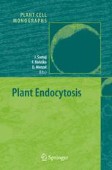Search
Search Results
-
Structural features of fungal genomes
Eighteen fungal genomes have been sequenced to date from a variety of taxonomic groups, with fifteen Ascomycota, two Basidomycota and one...
-
Biological Markers for Anoxia in the Photic Zone of the Water Column
In this chapter we review the current state of knowledge on the occurrence of anoxic conditions in the water column of past depositional systems...
-
Controls on the Carbon Isotopic Compositions of Lipids in Marine Environments
Organic carbon isotopes have long been used to study modern and ancient biogeochemical processes. Controls on the isotopic composition of organic...
-
Sterol Endocytosis and Trafficking in Plant Cells
Structural sterols are integral components of biological membranes. They regulate membrane permeability and fluidity, and they influence the...
-
Comparison of Molecular Mechanisms of Somatic and Zygotic Embryogenesis
Somatic embryogenesis has been used as a model system to understand the mechanisms regulating plant embryogenesis. The morphological and...
-
Extracellular Guidance Cues and Intracellular Signaling Pathways that Direct Pollen Tube Growth
Fertilization in flowering plants requires that a pollen tube deliver two sperm to the female gametes, which develop in ovules buried deep within...
-
Sources and Cycling of Organic Matter in the Marine Water Column
The organic carbon cycle operates on multiple time scales with a only small fraction of the global reservoir actively exchanged. For the marine...
-
Molecular Tools for the Analysis of DNA in Marine Environments
In the last decade, microbial ecologists have increasingly applied molecular techniques to investigate microorganisms in natural environments. The...
-
Persistent Organic Pollutants in the Great Lakes: An Overview
This chapter presents background information on the Great Lakes and summarizes the content of each chapter of this book.
-
SNAREs in Plant Endocytosis and the Post-Golgi Traffic
In eukaryotic cells, the transport vesicles carry various cargo proteins from a donor compartment to a target compartment, and discharge the cargo...
-
Plant Vacuoles: from Biogenesis to Function
The plant vacuolar system is far more complex than originally expected and multiple sorting pathways leading to various types of vacuoles can be...
-
Endocytosis in Guard Cells
Stomatal movement requires large and repetitive changes to cell volume and consequently surface area. These alterations in surface area are...
-
Endocytosis and Actomyosin Cytoskeleton
Mutual interactions between actin and endocytic assembly machineries are essential for successful clathrin-mediated endocytosis in yeast and...
-
Endocytosis and Membrane Recycling in Pollen Tubes
In plants, tip-growing cells are an ideal system to investigate signal transduction mechanisms and, among these, pollen tubes are one of the...
-
Atmospheric Transport of Terrestrial Organic Matter to the Sea
The transport of atmospheric particles with associated terrestrial organic matter to the oceans is an important process affecting various global...
-
Plant Prevacuolar Compartments and Endocytosis
Prevacuolar compartments (PVCs) are membrane-bound organelles mediating protein traffic from both Golgi and plasma membrane to vacuoles in...
-
Importance of Cytoskeleton and Cell Wall in Somatic Embryogenesis
Both the cytoskeleton composed of microtubules and actin microfilaments as well as cell wall components such as arabinogalactan proteins and...
-
Ions and Pollen Tube Growth
Ions play a crucial role in the control of pollen tube growth. In this review we focus on four that seem especially important: calcium (Ca...
-
Comparative Analysis of Biological Models used in the Study of Pollen Tube Growth
The mechanisms of pollen tube growth have been studied in a wide variety of plant species. Since the 1990s, with the explosion of molecular...
-
Gametic Embryogenesis in Triticum: a Study of Some Critical Factors in Haploid (Microspore) Embryogenesis
This review of embryogenesis from microspores in two types of wheat examines the influences of various procedures used to induce and produce...
